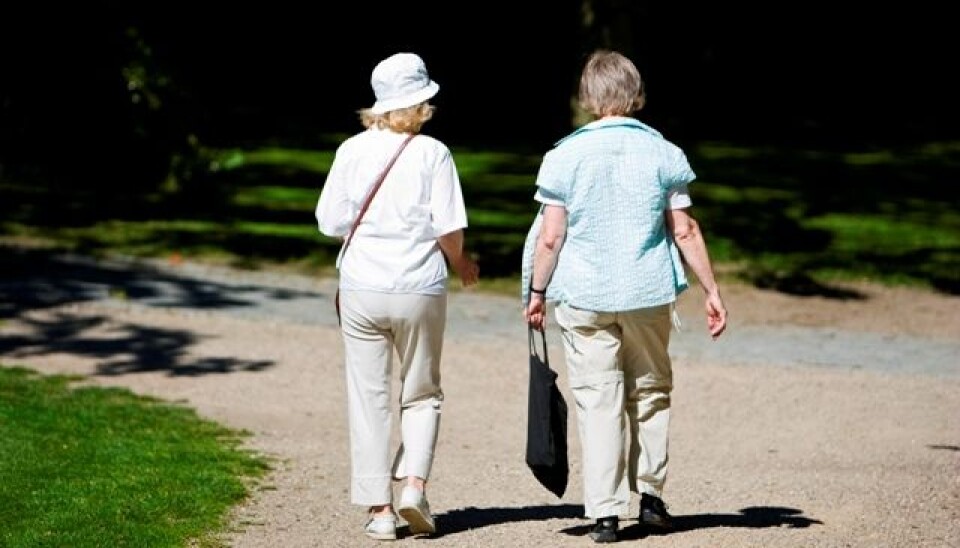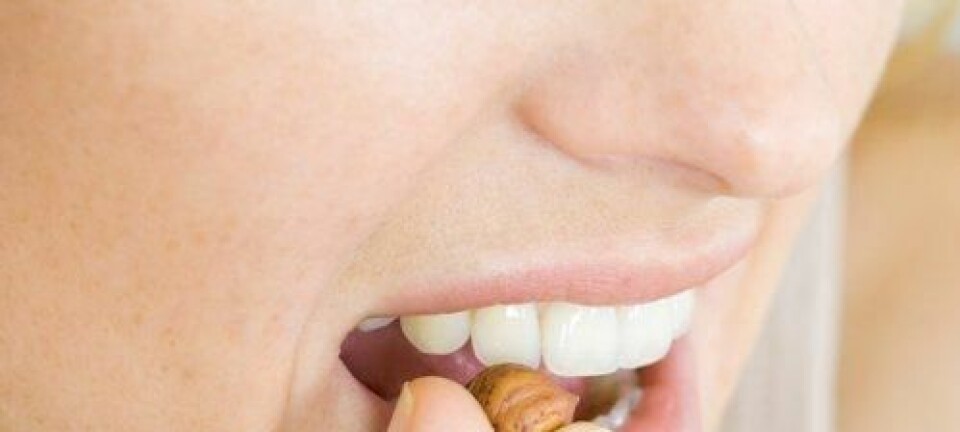
An easy walk lowers blood sugar level
A leisurely stroll after a meal gives a dramatic drop in dangerously high levels of blood sugar.
Denne artikkelen er over ti år gammel og kan inneholde utdatert informasjon.
We’ve learned through experience and the advice of experts that a healthy life can require bypassing whole aisles of temptations in the grocery store while forcing ourselves to work out on a regular basis in a gym.
But it doesn’t have to cost us so much sweat or demand superhuman supermarket discipline. Research reveals that an easy walk after a meal can do wonders for our blood sugar curve. And that’s not all.
Very mild activity appears to work as well as a more intensive workout.
“Just getting up and walking about is enough to prevent a rise in blood sugar considerably, in fact as much as medicines designed to curb high blood sugar levels,” says Professor Arne Torbjørn Høstmark.
You’d expect this advice to be included in lots of textbooks, but unfortunately it isn’t.
He has conducted a number of studies on this surprisingly little discussed phenomenon. The studies have been carried out at the Norwegian School of Sport Sciences and the University of Oslo and a number of researchers has been involved.
“You’d expect this advice to be included in lots of textbooks, but unfortunately it isn’t,” he says.
High blood sugar levels are common
A certain increase in blood sugar after a meal is perfectly natural. Digestion turns the carbohydrates we eat into glucose sugar, which is carried to the cells in our body by the circulatory system. Glucose is the fuel that powers all our cells.
The hormone insulin opens the cells in muscles and other tissue so that the sugar can be extracted from the blood and let in where it’s needed.
But sometimes this mechanism doesn’t work as it should. For many people, especially those with diabetes 2, the cells don’t open effectively enough and blood sugar levels can rocket into the stratosphere after a meal.
This can be rough on the body. Frequent instances of elevated blood sugar levels can increase the risk of diabetes 2 and cardiovascular diseases.
It’s very important to avoid such sugar highs after meals and there’s a pharmaceutical industry out there producing drugs to keep blood sugar levels down. But natural methods without side-effects can also tackle the problem.
Amazingly effective
It’s neither new nor unexpected that exercise has an impact on blood sugar levels – active muscles use more glucose. Nevertheless, little research has been done until recently on how physical activity after eating affects the rise in blood sugar levels.
When Høstmark and his colleagues first investigated the link on 39 women in 2006, they were surprised to see how effective it was.
In that study the researchers measured the effect of 30 minutes of relatively easy cycling after a meal of cornflakes. They found that the activity effectively cut the peaks off of blood sugar curves.
And the good results were observed both in people who were in good shape and those who weren’t, and in the young and old alike. This motivated the researchers to start looking into how easy the exercise could be while still being effective.
In the follow-up study, six men and three women went on easy walks after eating. Here, too, the light exercise was surprisingly beneficial.
Ambling is enough
An easy stroll giving a pulse just barely above the normal resting pulse rate prevented large increases in blood sugar levels. In fact, the effect appeared to be roughly equivalent to the results after the slightly more demanding cycling experiment.
One thing, however, that did make a difference was the duration. A 40-minute stroll lowered blood sugar much more than one lasting just 15 minutes.
That was confirmed in another study, this time with 11 women, all of them Pakistani immigrants. In Norway, they belong to a high-risk group for elevated blood sugar levels and diabetes 2.
This study also showed that a very easy walk lowered blood sugar levels significantly and that a 40-minute walk helped more than a 20-minute walk.
Should be included in health tips
Høstmark thinks this information needs to be communicated more effectively. Current advice to people at risk of developing diabetes 2 says nothing about the favourable effects of exercise after meals.
In addition, many people have no idea that they have harmful peaks in blood sugar levels. You don’t have to be fat and out of shape to be at risk.
“It’s entirely possible to be trim and in good shape and still have a poor regulation of blood sugar.”
Høstmark adds that a single test of blood sugar values before and after a hi-carb meal can tell you how your body reacts. But no matter what type of person you are, a little walk after a meal doesn’t hurt.
Walk to work and clean the kitchen after dinner
“If you reside a suitable distance from work it’s not a bad idea to stroll to the job after breakfast.”
And maybe you can find some light activities after the other meals too. The researcher wonders whether such activity could explain a characteristic phenomenon in cardiovascular disorders:
“Of course this is pure speculation, but men are more prone toward cardiovascular diseases than women. And men have traditionally sat down and relaxed after dinner while the women cleared the table and washed up,” he says.
“Perhaps this activity has given women a slightly lower rise in blood sugar and thus protected them against its negative effects? If people have maintained this activity pattern for years on end, it could have made the difference.”
-----------------------------------------
Read the Norwegian version of this article at forskning.no
Translated by: Glenn Ostling
Scientific links
- M. S. Lunde, V. T. Hjellset, A. T. Høstmark AT, Slow post meal walking reduces the blood glucose response: an exploratory study in female Pakistani immigrants, Journal of Immigrant and Minority Health, 2012, vol 14(5) (abstract only)
- A. T. Høstmark, G. S. Ekeland, A. C. Beckstrøm, H. D. Meen, Postprandial light physical activity blunts the blood glucose increase, Preventive Medicine, 2006, vol 42 (abstract only)
- H. Nygaard, S. E. Tomten, A. T. Høstmark, Slow postmeal walking reduces postprandial glycemia in middle-aged women, Applied Physiology, Nutrition, and Metabolism, desember 2009, vol 34(6), s 1087-1092. (Abstract only)
- E. Aadland & A. T. Høstmark, Very light Physical Activity after a Meal Blunts the Rise in Blood Glucose and Insulin, The Open Nutrition Journal, 2008, vol 2.

































